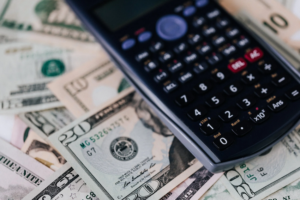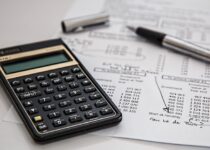8 Simple Steps to Help You Balance Your Checkbook
“This post may contain affiliate links. If you use these links to buy something we may earn a commission but you may gain some knowledge.”
8 Steps
- Record Earned Interest
- Record Service Charges
- Verify Deposits
- Verify All Check Entries
- Check Previous Statements for Outstanding Items
- Record Other Debits on Statement
- Enter Outstanding Checks
- Balance Your Checkbook
What to Know About Your Bank Statement
The first thing to remember when your looking at how to balance your checkbook is that your bank statement and checkbook will rarely balance on their own, so this is nothing to worry about. This is usually just a matter of timing.Your statement will only show transactions that have posted or cleared your account at the time of the closing date. You can usually find the closing date in the upper right or left hand side of the first page of your statement.
After your closing date it takes time for your statement to be printed and shipped to you so anything that you have debited or credited to your account since then will not be included on your statement. This included and ATM/Debit card transactions as well. This is why it is important to record these transactions in your check register at the time you make them to help keep your checkbook balanced.
Developing Good Habits
Record every transaction in your checkbook register and add or subtract it to your balance is the first habit to develop and will help tremendously when it comes to balancing your checkbook when you statement comes. It is important to record at the time of the transaction because it is very easy to forget if you decide to try and do it and the end of the day or week.
By recording every transaction at the time you make it, you will gain a better understanding of your spending habits and help you stick to the budget that you have set for yourself. This will also give you a clearer picture as to exactly how much money you have and prevent you from writing a bad check.
Balancing your checkbook monthly to match your statement within a few days of receiving your statement is the second habit to develop. With electronic banking these days a lot of people think they don’t need to because they can just look it up online. If you write checks for any reason it is not this simple. Developing this habit will also allow you to develop a budget and help you pay off your bad debts faster.
When you write a check, the person you write it to doesn’t always go and deposit the check right away and even if they do it can take up to seven days for it to post to your account. Most checks can stay good for up to a year so if you don’t record it in your register you may get a surprise a few months down the road when that person decides to take it to the bank and you have forgotten all about it. This is what we want to avoid.
One other reason to keep track of your checks and check numbers is so that if someone does not receive a check you wrote, you can easily reference back to your check register and cancel the check. You may need to put a stop payment on a check for some reason, say you forgot to enter another check and realize that your account will be overdraft, you can then reference back to your check register and put a stop payment on it so your check doesn’t bounce. Be sure to let the person know that you wrote the check to in this case so they don’t get a surprise when they go to the bank.
Do You Need Help With Your Credit [Find Out More Here]
Before you begin, you will need the following:
-
Previous two statements
-
Checkbook and register
-
Any ATM/Debit Card Receipts that you did not record in your checkbook register
-
Something to write with
-
Calculator
8 Steps to Balancing Your Checkbook
-
Record Earned Interest
The interest you earned should appear on the front page of your statement (if applicable), not all checking accounts earn interest. Enter this amount into your checkbook register as a credit. Be sure to record any other miscellaneous credits listed by your bank.
-
Record Service Charges
Record any charges that have been debited from your account that appear on your statement. These charged can include:
- Monthly services fees
- Per check charges
- ATM transaction fees
- Non-sufficient Funds (NSF) fees
Subtract these charges from your balance in your check register.
-
Verify Deposits
Review your current statement and check that all deposits listed on the statement match the deposit amounts you entered on your check register. Make a list of all the debits listed on your check register that do not appear on your statement and add them together.
-
Verify All Check Entries
Look at both your statement and check register, match up the transactions to make sure dollar amounts, dates, and check numbers all match up. If they do, check them off on both the statement and check register. If they do not circle them and come back to them to correct the problem once all the other transactions have been verified.
If The Transactions Don’t Match
Check for these three common errors:
- The transaction was entered incorrectly in your checkbook register,
- The item was debited or credited to your account for the incorrect amount
- The check number may have been listed incorrectly.
How To Correct the Errors
- Re-check your check images, canceled checks, deposit receipts, and ATM/Debit Card receipts.
- Please remember you will have some items that will not be checked off. These items are called “outstanding items.”
Note: If you do not have check images included with your statement, you can contact your bank and have them send a copy of the item in question. You will usually incur a fee for this.
-
Check Previous Statements for Outstanding Items
Check your statement for the outstanding items you had previously the last time you balanced your checkbook. If they are not on the current statement they are still considered outstanding.
If the items remain outstanding for 60 days or more, contact the person you that your wrote the check to and verify that they received it. If they have not, you may want to call you bank and place a stop payment on this check and send another check. Note: You may incur fees to place a stop payment on a check.
-
Record Other Debits on Statement
Review your statement and make sure that the other debits listed on the statement should actually be there. This includes automatic withdraws you might have such as insurance payments, auto payments or house payments. If they are, record them in your check register. If they are not, contact your financial institution immediately to find our what your options are to retrieve your money.Fraud is very common this day in age so with online banking it is very important to review your bank account frequently.
-
Enter Outstanding Checks
Create a list of all outstanding checks and Debit Card purchases from you check register. These are all the items that are not marked on your check register from step 4. Add the total of these items together.
-
Balance Your Checkbook
Next, balance your statement and your checkbook register. Use the formula below.
ADD(+) Deposits Shown in Checkbook Register But Not on Statment
Minus(-)Total Outstanding Checks
Equals(=)Your Current Balance
Check this balance with the balance on your checkbook register, they should be the same. If they are not, do not panic, this can be fixed. If they are the same you have successfully balanced your checkbook!
Do You Need Help With Your Credit [Click Here]
If Things Don’t Add Up
- Start by verifying your outstanding items.
- What’s the difference? Is the checkbook balance higher or lower than on your statement?
- Divide by 9. If 9 goes into the difference evenly (meaning with no decimal places), the problem is transposed numbers. For example, $365 was recorded as $356. Look over your check images and receipts to verify your amounts.
- Divide by 2. Divide the difference by 2 and if the answer you get has a dollars-and-cents amount (Example, $9.23 rather than $34.125), check for the $9.23 in your register. It was either subtracted instead of added, or vice versa.
I hope this gave you some insight into how to balance your checkbook. Please review this several times and implement the steps if you continue to have troubles.





